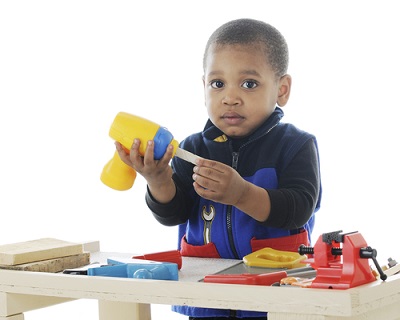
The racial disparities in American education, from access to high-level classes and experienced teachers to discipline, were highlighted in a report released on March 21 by the Education Department’s civil rights arm. Turns out, black students are more likely than other racial groups to be suspended from U.S. public schools, even as preschoolers.
African-American children represent about 18 percent of children in preschool programs in schools, but they make up almost half of the preschoolers who are suspended more than once, the report said. Six percent of the nation’s districts with preschools reported suspending at least one preschool child.
Minority Students Most Subject to Suspensions
Advocates long have said get-tough suspension and arrest policies in schools have targeted mostly minority students, but much of the emphasis has been on middle school and high school policies. This was the first time the department reported data on preschool discipline.
As The Daily Beast reports:
In 2012, for instance the Department of Education found that blacks accounted for 35 percent of students suspended at least once, and 39 percent of all expulsions. This, despite the fact that African Americans are just 18 percent of the total student population.
And of course, there are particular places where the rates of suspension and expulsion are insane. Of the students suspended under zero tolerance policies in New Orleans in 2009, for instance, all of them were black.
Earlier studies have found that these high suspension rates for black students, and especially males, exist among older students as well, Yale associate professor Walter Gilliam said. The race gap “was bad then, and it’s bad now,” Gilliam said. “You don’t have to be able to split hairs to see how disproportionate it is.”
Not Just Expulsion: Also About Referrals and Remedial Classes
It’s not just about being kicked out. The Daily Beast reports that compared to their white counterparts, black boys are three times more likely to be placed in remedial or “problem” classes, as opposed to receiving counseling or a diagnosis. In 70 percent of school-related arrests, it is black or Latino students who are involved. The same goes for referrals to law enforcement; in one Mississippi school district, for example, 33 out of every 1,000 students have been arrested or referred to a juvenile detention center, the vast majority of whom were black.
This Is All Part of the School-to-Prison Pipeline
Social-justice activists have been raising the alarm for years now about the “school-to-prison pipeline,” which the ACLU describes ”as a disturbing national trend wherein children are funneled out of public schools and into the juvenile and criminal justice systems.” It works like this: students, especially students of color, are hit with outrageous and disproportionate disciplinary measures in the school system.
This causes them to fall behind in their classes, but it can also result in students being suspended or shuffled off to separate classes for troublemakers. This of course results in higher dropout rates and eventually higher imprisonment rates.
There are myriad reasons why this is happening, but at least in some parts of the U.S., more enlightened thinking is taking over.
Restorative Justice
Restorative justice is the name of a program increasingly offered in schools seeking an alternative to “zero tolerance” policies like suspension, expulsion and truancy courts.
Since suspending students, or sending them to court, often leads to academic failure, thereby perpetuating the very behavior it is seeking to address, restorative justice instead provides a way of addressing negative behavior by keeping a student at school and using various means to encourage the offender to take responsibility and make amends.
The approach, which is now taking root in schools in Oakland, Calif., as well as Chicago, Denver and Portland, tries to nip problems and violence in the bud by creating stronger and more open relationships between students, teachers and administrators.
This is an important step forward, but I think we need to look at the statistics about minority preschoolers, and ask ourselves why these young children are so angry? Why do they need to act out? The answer will take us far beyond the education system.
Our most important fundraising appeal of the year
December is the most critical time of year for Truthout, because our nonprofit news is funded almost entirely by individual donations from readers like you. So before you navigate away, we ask that you take just a second to support Truthout with a tax-deductible donation.
This year is a little different. We are up against a far-reaching, wide-scale attack on press freedom coming from the Trump administration. 2025 was a year of frightening censorship, news industry corporate consolidation, and worsening financial conditions for progressive nonprofits across the board.
We can only resist Trump’s agenda by cultivating a strong base of support. The right-wing mediasphere is funded comfortably by billionaire owners and venture capitalist philanthropists. At Truthout, we have you.
We’ve set an ambitious target for our year-end campaign — a goal of $250,000 to keep up our fight against authoritarianism in 2026. Please take a meaningful action in this fight: make a one-time or monthly donation to Truthout before December 31. If you have the means, please dig deep.